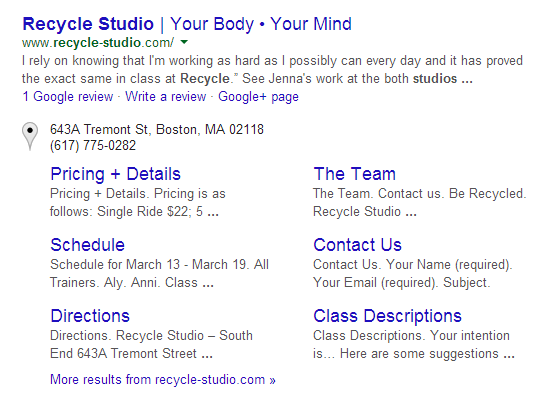
Do you feel like a dainty pony in a world of fierce PPC unicorns?
Time and time again you tell yourself to create a PPC plan/workflow, yet you have no idea how to do this. Your palms are consistently sweating due to the persistent pressure from your boss demanding you improve your quality score or finally show the return on the huge chunk of marketing budget he or she has let you use for paid search.
You log in to your WordStream or Google Ads (formerly known as AdWords) account, overwhelmed by all the functionality and unaware of where to start. No plan = no direction = no success. But no goals = no workflow.
Goals are a key component to creating your PPC workflow. Just think about it, do you ever drag yourself out of bed and hop on the treadmill just because? Or attend an hour-long, sweat-drenched spinning class after working a ten-hour day for no reason at all? Probably not. More than likely you have a specific goal in mind, whether it’s to lose weight, increase your energy level, or reduce your chance of a heart attack! The same applies for your PPC campaigns. You need goals and a plan.
All too often my clients are not quite sure what their PPC goals are. They know they need more business, but they aren’t sure which metrics to focus on or where to find the value in PPC.
Before developing your PPC plan, start by asking yourself questions like:
- What am I trying to accomplish with my Google Ads spend?
- What metrics are most important to my business?
- What outcome am I predicting to see?
Take the time to step back and reflect on not just your business goals in general, but specific goals allocated to your PPC campaigns and budget.
Asking yourself these critical questions and always having your goals in mind will help you make the right decisions when going through your workflow.
With PPC, my clients’ goals tend to be similar, so let’s walk through three common goals and the plans you need to implement to meet those goals, along with the KPI’s or key performance indicators one should be focusing to accomplish each specific goal.
PPC Goal: Increase Traffic To My Website. PPC Plan: Focus on CTR.
Did you know that the web recently turned 25? It is now hard to imagine a world without it, as the majority of us treat our smartphones (or portable computers) as an additional limb.
As the web grows older, the competition to make your site popular increases, and when your website becomes like the lame party that no one wants to attend, it becomes clear something needs to be done.
To get more visitors, you need searchers to click on your ads, so incorporate time into your PPC plan each week to create AWESOME and relevant ad text. Focusing on click-through-rate (CTR) is going to be the most crucial metric to improve here.
The other day I hopped on Google to find a cycling class in downtown Boston and read an ad description that had no detail, no information on pricing or special offers, and was overall just not appealing so guess what? I opted out of clicking on that ad.
The same thing will happen with your ads if they are not compelling – searchers are simply not going to click on them and visit your site. According to internet marketer and entrepreneur Sujan Patel, “Copywriting is both an art and a science that’s difficult to learn, but important to implement…a single technique – when implemented correctly – can make a major difference in your ability to close sales.”
There is an abundance of great content on writing compelling ad copy, but here are few quick tips to incorporate into your workflow:
Promote Special Offers
Are you having a spring promotion? Offering free shipping for the month of March? Running a contest? Whatever it is incorporate it in your ad text for the duration of the offer – also remember Googlers like numbers!
Enable and Monitor Sitelink Extensions
I immediately flag a client who doesn’t have sitelink extensions enabled. They’re essentially like free ad space extending the presence of your ad copy, and giving you the potential to receive a lot more clicks and traffic. Google has also stated that sitelinks extensions play a part in your ad rank, i.e. if you and your competitor have the same bid, same quality score, but you have sitelink extensions enabled, take a lucky guess at who’s going to get higher placement in the SERPS.
Test!
Search Engine Journal’s Saad Kamal said it well: “Testing is absolutely essential and should not be ignored at any cost – No matter how good your campaign is currently performing.” Not running A/B tests on ads is one of the biggest mistakes I see across accounts. In testing you can make such ridiculously incredible discoveries – like the order of the words in your headline might increase your click-through-rate by 5%. The smallest tweaks really can make drastic improvements so don’t be afraid to run two or three ads simultaneously in the same ad group.
Get Organized
You also need to focus on organization and relevancy across the board. To do so, check to see if:
- Your campaigns are focused around your products, locations, or any other general themes that makes sense for your business objectives.
- Each campaign needs to have ad groups related to the theme of that campaign. For example, if your campaign is for running shoes you may divide your ad groups into the different brands of shoes so Adidas, Nike, Asics, etc.
- For each ad group you’ll need a list of tightly themed keywords (no larger than 20-30 keywords per ad group). If themes start overlapping or if keywords start becoming less and less relevant don’t hesitate to create new ad groups. For example you might have two Adidas ad groups, one targeted towards men and one towards women, or even four Adidas ad groups targeting the different shoe models you sell.
- On a regular basis remember to maintain a good keyword list and review your search terms to add keywords to your account that you may be missing out on or eliminate negatives that you may be wasting spend on.
Continuously incorporating relevancy and organization checks to your workflow will help ensure your ad copy is highly relevant and compelling, which will lead to an increase in traffic (as well as better quality scores).
PPC Goal: Increase Sales or Leads. PPC Plan: Increase Conversions.
If your goal is to make more sales or gain more leads you need to focus on getting more conversions and increasing your conversion rate. A conversion is defined as any meaningful action taken on your site – for example a purchase, form completion, newsletter subscription, etc.
It’s important to activate conversion tracking so you can focus on conversion data and update your campaigns based on your findings. For example, you may notice that the long-tailed keyword “dance workout classes in downtown Boston” is giving you 5X more conversions than the other keywords in that ad group. You therefore may want to allocate more of your budget to that keyword. The same could apply to ad copy so if you test three different ads you may find one converts better than the other two.
Incorporate these steps into your PPC plan to increase conversions:
Focus on Converting Keywords
Sort your keywords by conversion to see which ones are converting. Allocate more budget to these keywords, and experiment with tiered bidding strategies on these words. For example if the keyword “boston yoga” is converting well on modified broad, then try bidding on that term with phrase and exact (and remember to bid a bit higher the more restrictive you get). You may even want to make a campaign focusing on high-converting products or locations to allocate a higher daily budget to that campaign.
Closely Monitor Negatives
Does your click-through or conversion rate blow? This might be because you’re wasting spend on keywords that should be set as negatives. It’s important to be consistently monitoring your search terms and adding negatives to your list. Using tools like WordStream’s QueryStream will give you insight into what people are actually searching for to find your ads, as well as the ability to set negatives right through the tool. For example you might want to filter out clicks from queries that include the word “free” if your offer isn’t free. That traffic isn’t likely to convert.
Continuously Optimize Your Landing Pages
If your landing pages aren’t optimized there’s going to be a huge drop in your conversion rate, even if people are clicking your ads. This should be obvious, and is clearly the most crucial step to gaining more conversions. Recently WordStream founder Larry Kim and Paid Search Strategist Mark Irvine conducted a popular webinar on discoveries to triple your conversion rate. They did an in-depth analysis on thousands of Google Ads accounts to discover why some advertisers’ conversion rates are two or three times the average. Utilize the following strategies to continuously optimize your landing pages:
- Present your offer with dignity: Make sure it’s creative, captivating, and unique. How do you know if your offer is lacking? Check your conversion rate and ask your customers. You can fiddle with button colors and form length all day, but it’s more important to have an offer that people actually want.
- Keep it simple, neat, and captivating. Experiment with formatting distinct from your competitors, and think of the flow or process that you would enjoy from a user standpoint. I found the offer below intriguing for several reasons: the ad copy is simple, the image is endearing, the form has only two fields, and they loop in the visitor by offering the first lesson for free – nice!
- Create landing pages for the intent of converting your AdWords leads. Each ad group should have its own landing page that’s super specific and relevant to the keywords and ad copy in that group. If relevancy is lost, the lead or sale is lost. Think about it if you were looking to sign up for Tae Bo class, but were directed to a page all about boot camp classes. You would likely bounce back to Google since the page was not relevant to what you were looking for. The gym might offer Tae Bo, but you’re probably not going to search around to find out. Make sure you have specific landing pages for each of your offerings that are visually appealing, relevant and have a clear call to action.
PPC Goal: Raise Brand Awareness. PPC Plan: Utilize the Display Network & Remarketing.
If your goal is to raise brand awareness you’re likely focusing less on conversions and more on just getting a larger target audience super excited about your business. Maybe you’re announcing the release of a new workout DVD and want to expose it to as many relevant people as possible to familiarize them with your brand. In this case you’ll want to drive impressions, which represent how many people lay eyes on your ad.
In this scenario, the Google Display Network is where it’s at! Creating display campaigns will allow you to branch out of search and share your fabulous ad creative across the web on relevant sites. You’ll want to wave adios to boring text ads and get creative with media-rich ad formats including videos and images while using CPM or cost-per-impression bidding. If your budget is a bit more restrictive you might try utilizing placement targeting so you can still gain more exposure, but have the control of picking websites or sections of sites which you can run your campaign. Focusing on metrics like impressions, reach and frequency help you track your effectiveness.
Follow this PPC plan to get started on display:
- Create stellar creative: Before taking off on display you need quality ads that are visually appealing and pull people in.
- Know your audience: Are you selling women’s clothing? Or targeting a specific geographic region? Or even a specific age group? Knowing your audience, what their user behavior is on the web, and what interests them will help you set up effective display campaigns with a much better ROI.
- Keep an eye on what’s working and what’s not: For example if you’re using managed placements track which sites are performing best for you. Look at how many impressions, clicks, etc. your ads are receiving and adjust accordingly.
- Remarket: Have you ever felt like a site or product you previously visited started appearing more frequently? Maybe you were looking at a pair of Jack Rogers for the summer, a few hours later logged onto Facebook and saw an ad for those fabulous sandals in the exact style and color you looked at before – “Aahh it’s meant to be” you think as you proceed to fill in your credit card information. This is not exactly “meant to be” but rather the power of remarketing. Remarketing can be very powerful for conversions, but even more so for brand recognition as it gives you the ability to follow people around who have already visited your site. This may sound like stalking, but it can be done in a very controlled manner (i.e. by using frequency capping, targeting specific audiences, etc.). Take a look at the WordStream remarketing ad below that appeared when I was watching a YouTube video!
Key Takeaways
Once you have an effective workflow in place you will save time and money, improve results and likely reduce PPC stress. Put time into your calendar each week to dedicate to your plan, and stop being lazy about PPC. To reiterate, I recommend taking the following steps to get started:
Step #1: Define your PPC goal(s) – and be specific with research, numbers, etc., making sure your goals are realistic and attainable.
Step #2: Create a workflow that you can implement on a regular basis that serves with your business goal(s).
Step #3: Block off time in your calendar to dedicate to your workflow – whether that is every Monday afternoon or 4 hours once a month. If you are ignoring your Google Ads account, you’re not only going to waste money, but lose site visitors, sales, and all of the other components that are likely critical to the growth of your business.
Step #4: Repeat your workflow on the regular.
Step #5: $$$
Also, check out the WordStream workflow webinar to gain other useful tips and tricks to help you work towards a leaner Google Ads account to reach your PPC goals.
PPCers, I’d love to know:
Do you currently have a workflow in place?
If so, what does it entail, and have you seen success?










